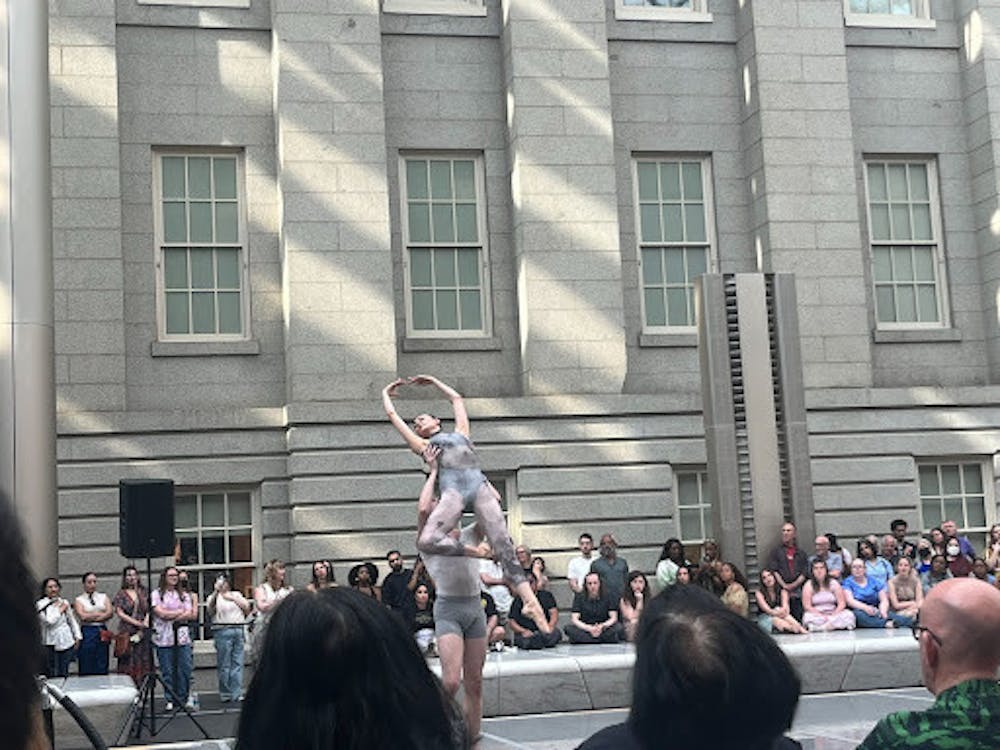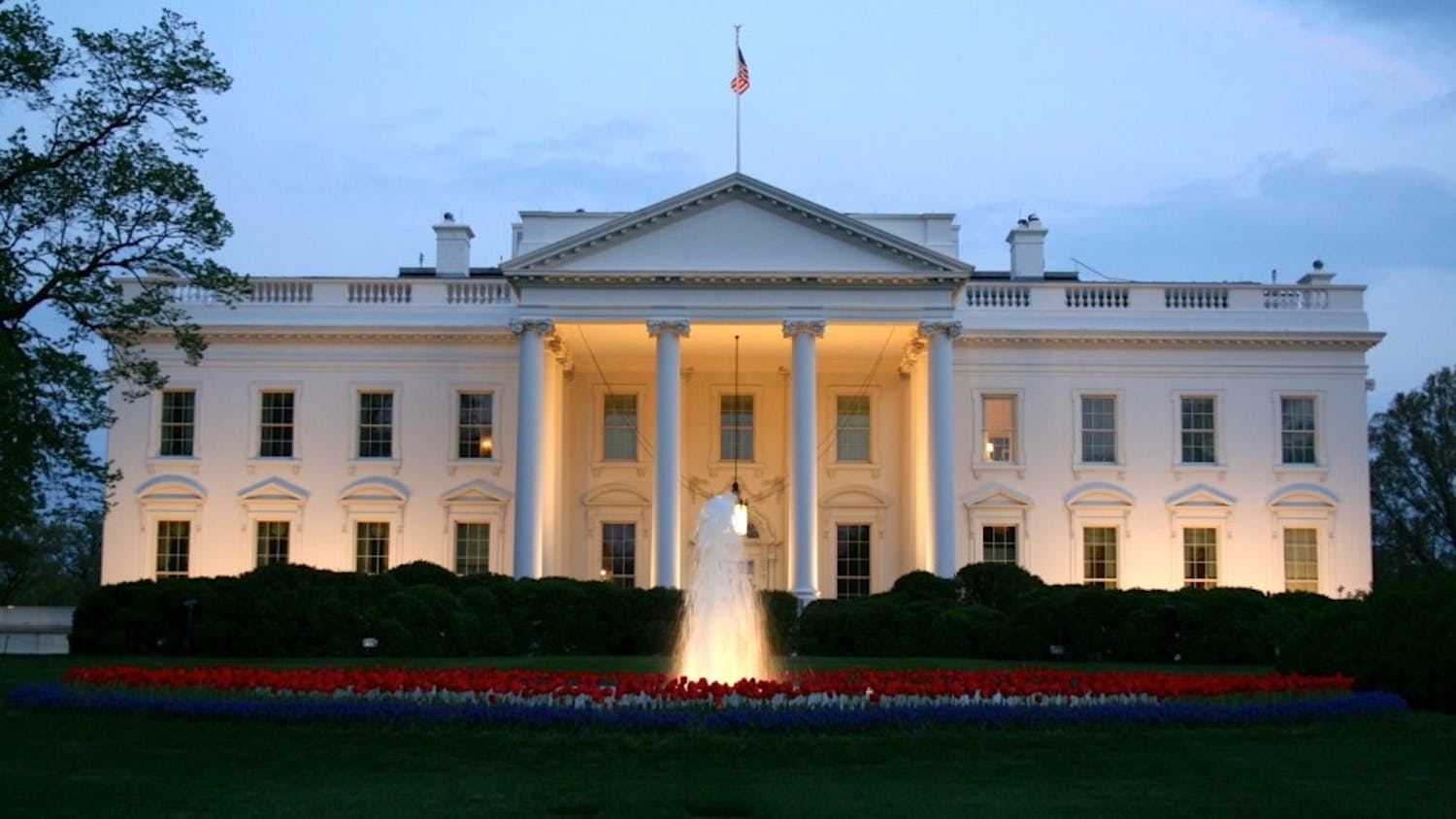The Moveius Contemporary Ballet Company presented “Glacier: A Climate Change Ballet” on Sunday, April 28 in the Rober and Arlene Kogod Courtyard at the National Portrait Gallery.
The production was in celebration of Earth Month in accompaniment of the National Portrait Gallery’s “Forces of Nature: Voices that Shaped Environmentalism” exhibition, which features key figures of the American environmentalist movement such as Rachel Carson, George Washington Carver and Henry David Thoreau.
The individuals featured contributed their work to attitudes and apolitical actions surrounding conservation, ecology and present-day climate action. The exhibit will be displayed on the gallery’s second floor until Sept. 2.
“Glacier,” featured nine dancers from Diana Movius’ Moveius Contemporary Ballet, which has been featured in Kennedy Center productions and acclaimed by multiple publications, namely the Washington Post.
Movius, a former ballet dancer from Charlotte, North Carolina, earned a B.A. in anthropology with a dance minor from Stanford University. She works as a climate policy expert at Climate Advisers, which brings together foreign policy, economics and environmental studies experts to work to promote a green global economy.
Founded in 2010, the D.C.-based ballet company presents a unique blend of ballet and contemporary choreography centered around critical issues, such as climate change.
Their goal is to create an accessible medium for pressing global issues that can be presented through artistic expression.
“Glacier,” choreographed by Movius and directed by Alvaro Palau, follows a loose plotline of arctic ice caps shifting and melting as oceans warm due to global climate change. Each movement of the piece demonstrated a different aspect of this issue — namely melting glaciers, shifting sea ice and habitat loss for polar bears.
The piece was featured in the 2018 Global Climate Action Summit and has toured to the Ailey Citigroup Theater in New York and the Brava Theater Center in San Francisco.
Movius explained in an address preceding the performance that her inspiration for the piece came from a documentary about melting ice caps, where she discovered that “the type of movement that melting ice creates can translate very well into physical movement on dancers.”
In the piece, dancers acted as glaciers, ice caps and polar bears. They worked with the ideas of unity versus separation to perform a stunning repertoire of classical pointe work accented with contemporary influences that break the barriers of conventional ballet technique in a truly breathtaking manner.
With each of the six music changes, the dancers’ movement quality shifted to represent the “emotional impact” that Movius believes drives the polarization surrounding climate change.
“Glaciers,” the first and titular movement, featured crescendoing progressions across the floor, which were starkly different from the haunting solo choreography in “Meltwater,” the second movement.
The perfect synchronicity in “Sea Ice,” the third movement, provided a poignant foil to the sharpness of “Calving” — all of which culminated in “Polar Bear” and “Melting,” which provided an emotionally-charged air of desperation through the dancers’ expressiveness.
Movius also incorporated creative uses of sound into the piece through carefully orchestrated pauses to allow for the timbre of the dancers’ pointe shoes and the choreographed floor movement to add a percussive element.
Reminiscent of the rumbling sound created by earthquakes — or more appropriately, shifting ice caps — these sounds added an unexpectedly eerie element to the inventive work.
Accented with soaring leaps, graceful pas-de-deux work and impressive floor work, the piece left audiences enlightened with the possibility of combining policy and art as a way to catalyze significant social and environmental change.
This article was edited by Marina Zaczkiewciz, Sara Winick and Abigail Turner. Copy editing by Luna Jinks, Sarah Clayton, Charlie Mennuti and Julia Patton.





